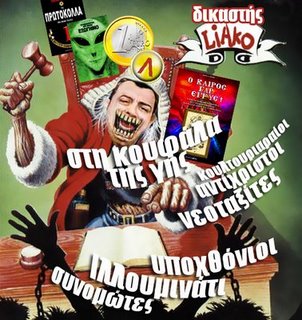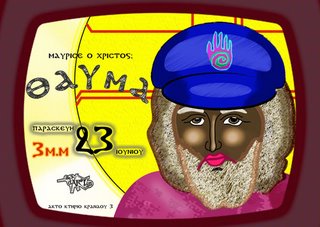Thauma
Thauma
�ιαμα�����μα��Ρ για �ην α�αξί��η �Ρ βά�ο� μα�, �ο� �αί�νΡι �η μο��� ���λ�� βία� Ρναν�ίον ��μ�ολι��ν μα�.
Ξ�ΞΉΞ±ΞΌΞ±Ο�Ο�Ο�Ο�Ο�ΞΌΞ±Ο�Ο�Ξ΅ Ξ³ΞΉΞ± Ο�Ξ·Ξ½ Ξ±Ο�Ξ±ΞΎΞ―Ο�Ο�Ξ· Ο�Ξ΅ Ξ²Ξ¬Ο�ΞΏΟ� ΞΌΞ±Ο�, Ο�Ο�Ξ±Ξ½ Ξ±Ο�Ο�Ξ� ΡκδηλΟ�Ξ½Ξ΅Ο�Ξ±ΞΉ ΞΌΞ΅ Ο�Ξ·Ξ½ Ο�Ο�γκάλΟ�Ο�Ξ· Ο�Ξ·Ο� ΞΞΊΞ½ΞΏΞΌΞ·Ο� Ξ΄Ο�Ξ¬Ο�Ξ·Ο� λίγΟ�Ξ½ Ξ±Ο�Ο�Ο�Ξ½ΞΏΞΌΞΉΞΊΟ�Ξ½.
Ξ�ΞΉΞ±ΞΌΞ±Ο�Ο�Ο�Ο�Ο�ΞΌΞ±Ο�Ο�Ξ΅ Ξ³ΞΉΞ± Ο�Ξ·Ξ½ Ξ±Ο�Ξ±ΞΎΞ―Ο�Ο�Ξ· Ο�Ξ΅ Ξ²Ξ¬Ο�ΞΏΟ� ΞΌΞ±Ο�, Ο�ΞΏΟ� Ξ±Ο�ΞΏΟ�ΡλΡί Ξ· ανΡίΟ�Ο�Ο�Ξ· Ο�αλαιΟ�Ο�Ο�Ξ―Ξ± Ξ³ΞΉΞ± Ο�Ξ·Ξ½ ΞκδοΟ�Ξ· διαβαΟ�Ξ·Ο�Ξ―ΞΏΟ� ΞΊΞ±ΞΉ Ο�Ξ±Ο�Ο�Ο�Ο�Ξ·Ο�Ξ±Ο�.
Ξ¦Ο�άνΡι Ο�ΞΉΞ¬! Ξ�Ξ·Ο�ΞΏΟ�ΞΌΞ΅ Ο�Ξ· Ξ»Ξ�Ο�Ξ· Ο�Ο�γκΡκΟ�ΞΉΞΌΞΞ½Ο�Ξ½ ΞΌΞΟ�Ο�Ο�Ξ½ Ξ³ΞΉΞ± Ξ½Ξ± Ο�Ο�Ξ±ΞΌΞ±Ο�Ξ�Ο�Ρι Ξ· Ξ±Ο�Ξ±ΞΎΞ―Ο�Ο�Ξ· Ο�Ξ΅ Ξ²Ξ¬Ο�ΞΏΟ� Ο�Ο�Ξ½ Ξ�λλΞ�Ξ½Ο�Ξ½ Ο�ολιΟ�Ο�Ξ½.
�η�ο�μΡ:
- ΀ον Ξ±Ο�Ο�Ξ»Ο�Ο�ΞΏ Ο�ΡβαΟ�ΞΌΟ� Ο�Ο�ΞΏΟ� Ο�Ξ·Ξ½ Ο�Ο�ΞΏΟ�Ο�Ο�ΞΉΞΊΟ�Ο�Ξ·Ο�Ξ± ΞΊΞ±ΞΉ Ο�Ξ·Ξ½ Ξ±ΞΎΞΉΞΏΟ�Ο�ΞΟ�Ρια Ο�Ο�Ξ½ Ο�ολιΟ�Ο�Ξ½.
- ΀ην Ξ±Ο�ΞΏΞΊΞ±Ο�Ξ¬Ο�Ο�Ξ±Ο�Ξ·, ΞΌΞ΅ ΞΟ�Ξ³Ξ± ΞΊΞ±ΞΉ Ο�Ο�άξΡιΟ�, Ο�Ξ·Ο� Ξ±ΞΎΞΉΞΏΟ�ΞΉΟ�Ο�Ξ―Ξ±Ο� Ο�Ξ·Ο� Ξ�λληνικΞ�Ο� Ξ�Ο�Ο�Ο�Ξ½ΞΏΞΌΞ―Ξ±Ο� Ο�Ο�Ξ·Ξ½ ΞΏΟ�ΞΏΞ―Ξ± ΞΟ�Ρι Ξ±Ξ½Ξ±Ο�ΡθΡί Ξ· Ο�Ξ�Ο�Ξ·Ο�Ξ· Ο�Ξ·Ο� ΞΞ½Ξ½ΞΏΞΌΞ·Ο� Ο�άξηΟ�.
- ΀ον άμΡΟ�ΞΏ ΡξοΟ�θολογιΟ�ΞΌΟ� διαδικαΟ�ΞΉΟ�Ξ½ Ξ³ΞΉΞ± Ο�Ξ·Ξ½ ΞκδοΟ�Ξ· διαβαΟ�Ξ·Ο�Ξ―Ο�Ξ½ ΞΊΞ±ΞΉ Ο�Ξ±Ο�Ο�ΞΏΟ�Ξ�Ο�Ο�Ξ½.
Ξ�Ξ·Ο�ΞΏΟ�ΞΌΞ΅ Ξ±Ο�Ο�Ξ¬ Ο�ΞΏΟ� ΞΈΞ± ΞΟ�Ο�Ξ΅Ο�Ξ΅ Ξ½Ξ± Ρίναι Ξ±Ο�Ο�ΞΏΞ½Ο�Ξ·Ο�Ξ± Ο�Ξ΅ ΞΌΞΉΞ± δημοκΟ�Ξ±Ο�ΞΉΞΊΞ� ΞΊΞΏΞΉΞ½Ο�Ξ½Ξ―Ξ± Ο�Ο�ΞΏΞ½ 21ΞΏ Ξ±ΞΉΟ�Ξ½Ξ±.
Ξ�ΞΉΞ± Ο�Ο�Ο�Ο�ΞΏΞ²ΞΏΟ�λία Ο�Ο�Ξ½ ΞΉΟ�Ο�ολογίΟ�Ξ½: Ξ�ΞΌΟ�ΡλοΟ�ιλοΟ�ΞΏΟ�Ξ―Ξ΅Ο�, Ξ±Ξ½Ξ±Ξ�Ο�Ο�Ο�Ο�Ο�Ξ·-ΞΉΟ�Ο�ΞΏΞ»Ο�Ξ³ΞΉΞΏ, Ξ�Ξ� Ξ�Ξ�Ξ£Ξ�Ξ�Ξ� Ξ‘Ξ�, Ξ�λΡΟ�ΞΈΞ΅Ο�ΞΏΟ� ΣκοΟ�Ξ΅Ο�Ο�Ξ�Ο�, Ξ�Ο�Ο�ΞΏΞ»Ο�Ξ³ΞΉΞΏΞ½, Ξ�Ξ�Ξ� Ξ²Ξ»ΞΟ�Ο� Ξ�Ξ�Ξ� Ξ±ΞΊΞΏΟ�Ο� Ξ�Ξ�Ξ� μιλάΟ�, Ξ�Ξ±Ξ»Ο�Ο�Ο�Ξ²Ο�Ξ±ΞΊΞΏ, Ξ�Ξ±Ο�ΞΏΟ�Ο�Ξ±, Ξ�Ξ΅Ο�ΞΊΟ�Ο� Ξ�Ο�Ο�Ο�Ξ²ΞΏΟ�, Ξ»:Ξ·Ο�, Ξ�Ξ±Ο�Ξ³Ξ±Ο�ΞΉΟ�Ξ±Ο�ΞΞ½ΞΉΞ±, Ξ�Ξ΅ Ξ�Ο�Ξ±ΞΏΟ�λια ΞΊΞ±ΞΉ Ξ�ΞΏΟ�Ο�νάδΡΟ�, Ξ£Ο�ΞΟ�Ξ±Ξ½ΞΏΟ� Ξ�. Ξ Ξ±Ο�Ξ±Ξ½Ο�Ο�Ξ±Ο�, Ο�ΞΏ Ο�ΞΟ�ΞΉ, ΨιλικαΟ�ΞΆΞΏΟ�, ANARRIMA, Digital Era, divaynne, doncat, eidisis-sxolia, Fairy Smoke, fastbackwards, Gravity & the Wind, GreekUniversityReform, Non-Linear Complexity, Nylon, oraelladas, RealityTape, taparaponasas stoMIXER, vrypan|net|weblog, We are not alone
Ξ Ξ¬Ο�Ο�Ξ΅ ΞΌΞΟ�ΞΏΟ� Ο�Ο�Ξ·Ξ½ Ο�Ο�Ο�Ο�ΞΏΞ²ΞΏΟ�λία ΞΌΞ±Ο�.
tags: polydoras | meme: a6edf8bc8e7a7ed85215abe9b94bbc7a




